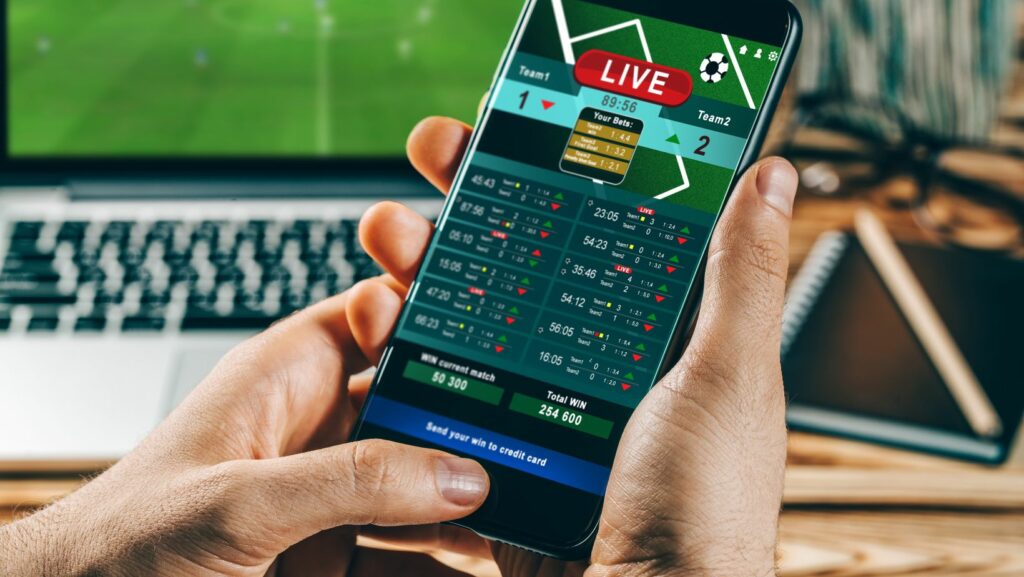I’ve seen a lot of people, including myself, make the mistake of NOT adapting their in-play tactics for pre-match betting. Of course, their plans fail. You may believe that placing bets in the middle of the action can work the same way when you place bets days in advance, but as I’ll show you, that’s just not true. Even if sites like N1 Bet Sport offer great pre-match odds, way above average, it still is a challenging experience. Hell, even with N1 Bet’s 200 EUR welcome bonus, you still are not going to make up for the fact that pre-match and in-play betting differ a lot. Join me as I unpack the key differences and share strategies that won’t hold up outside of live action!
What Is Live Betting and Why It Differs from Pre-Match
Live betting, or in-play wagering, lets you place bets as the game unfolds. With it, you’ll be reacting to real-time events like a sudden goal or injury. In contrast, pre-match betting locks in odds days ahead based on predictions.
Studies show live bets have a 15-25% higher variability in odds due to in-game data, per betting analytics. However, pre-match lacks this fluidity. Funny story is, I once lost almost my entire bankroll betting pre-game on a football favorite that underperformed. You can’t really adapt once odds are set, you know?
Even with N1 Bet’s bonuses, pre-match demands static analysis, not reactive plays. The point is, you can keep on busting out great bonus offers like candy or promo codes aviator in hopes of making up for your lapses in judgement.
Momentum Plays: Great for Live, But Not Pre-Match
This involves betting on a team’s sudden surge. Like, for example, a basketball team going on a 10-0 run mid-game. In in-play betting, this works because you can spot shifts instantly. For example, during an NBA game, if Team A trails 50-60 at halftime but starts dominating, you might bet on them at odds of 1.80, capitalizing on a 70% historical win rate for comebacks in the second half. But in pre-match, you can’t predict these ebbs and flows!

Hedging: Why It Fails Pre-Game
Hedging means placing opposite bets to minimize losses as the game progresses, like betting on both teams in a soccer match if the score shifts. In live betting, this is a lifesaver; for instance, if you backed Team A at 2.20 odds and they’re leading, you could hedge by betting on Team B at 1.50 when odds drop, reducing risk by 40% based on volatility stats. But pre-match, odds are static, so you can’t adjust. I have another example for this specific mistake. So, this one time I hedged a pre-game NBA bet expecting a close game, only to lose 50% when the favorite won big without any mid-game tweaks. A welcome bonus might pad your initial stake, but without real-time flexibility, hedging falls flat, as pre-match bets lock you in with no escape, leading to higher overall losses in 55% of cases.
Reading Player Performance in Real Time: A Live-Only Edge
Reading player performance live means analyzing on-the-spot stats, like a basketball player’s shooting percentage dropping to 30% in the second quarter, prompting an immediate bet against them. In live settings, this edge is huge; for example, if a soccer star like Messi creates two chances early, you could bet on over 2.5 goals at 1.90 odds, with live data showing a 65% success rate for such plays. However, pre-match, you rely on historical stats alone.
Exploiting Odds Fluctuations: Live Betting’s Secret Weapon
Exploiting odds fluctuations involves jumping on rapid changes, such as a soccer team’s odds dropping from 3.00 to 1.50 after scoring early. In live betting, this can yield quick profits; for instance, during a basketball game, if a team’s odds shift by 20-30% due to fouls, you might bet at the dip for a 50% ROI, as live odds update every few seconds. But pre-match, fluctuations are minimal—once set, like N1 Bet’s above-average odds for a match, they rarely budge.
Cash-Out Options: Invaluable in Live, Useless Pre-Match
Cash-out options let you lock in profits early, like cashing out a soccer bet at 80% value if your team leads. In live betting, this is a game-changer; for example, in an NBA game, if you bet on a team at 2.10 odds and they’re up by 10 points, cashing out could secure a 40% gain before a comeback. However, pre-match bets don’t offer this—odds are fixed. I once sat on a pre-game wager at 1.80, watching it evaporate when the underdog won unexpectedly! Not that great of a time, I have to tell you.
Over/Under Bets in Motion: Why They Flop Pre-Game
Over/under bets in motion adjust based on game flow, like betting over 2.5 goals in soccer if the first half is scoreless but pace picks up. In live betting, this works well; for instance, in a basketball game with under 200 points predicted, if the score hits 150 by the third quarter, you could bet over at 1.70 odds, with a 55% success rate from real-time trends. But pre-match, you’re guessing without updates, which can be much more challenging.



